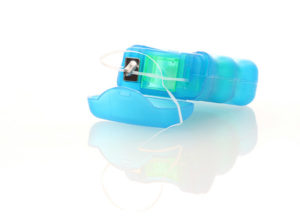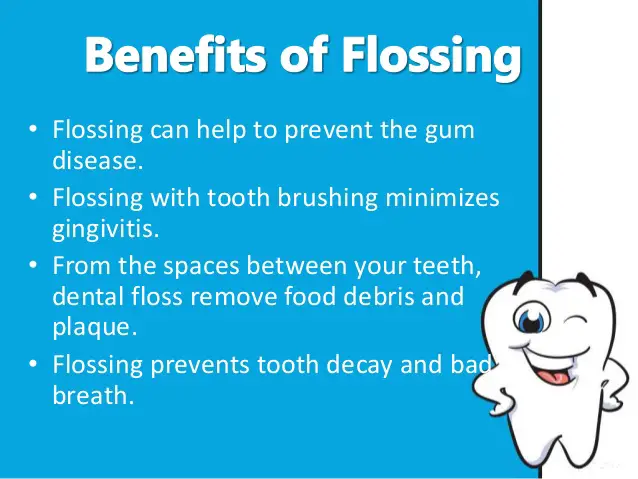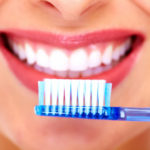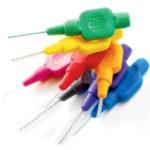Table of Contents
How Often Should You Floss Your Teeth?
According to the ADA you should floss your teeth at least once a day, best at bedtime. The few additional minutes a day you take for flossing teeth means a lot for your oral health. After mastering the flossing technique, you will need only 2-3 minutes to thoroughly clean all teeth surfaces.

Should You Floss Before or After Brushing Teeth? What Is The Order Of Brushing Teeth, Flossing and Mouthwash?
As long as you are properly cleaning in between you teeth, it really doesn’t matter that much. The correct order is first to floss your teeth with dental floss, or you can use a Waterpik to remove plaque to allow a toothpaste to enter into interdental spaces. At this step, you can also use a tongue scraper. Next you should brush your teeth using toothpaste and toothbrush for at least 2 minutes. At the end, rinse your mouth with mouthwash for 30 seconds to 1 minute. If the mouthwash you use contains fluoride, when you are done, don’t rinse with water because that will prolong the contact time of fluoride with teeth surfaces.
Can You Floss Too Much? Can You Damage Your Teeth By Flossing?
 The answer is simple, no you can not! However, the dental floss should be used properly to avoid damage of your teeth and gums. After cleaning with dental floss or other interdental cleaner, you will have the feeling that you entire mouth is cleaner because it reaches the all the areas where toothbrush fibers don’t have access. Your breath will be fresher as well, and the health of your gums will be improved. So if your dental floss collects dust on the shelf, or you need to choose one that is right for you, why not get it and give it a try? Even if it’s strange at first, continue to exercise how to floss teeth. Soon you will feel the difference and realize that teeth flossing has become part of your favorite daily routine.
The answer is simple, no you can not! However, the dental floss should be used properly to avoid damage of your teeth and gums. After cleaning with dental floss or other interdental cleaner, you will have the feeling that you entire mouth is cleaner because it reaches the all the areas where toothbrush fibers don’t have access. Your breath will be fresher as well, and the health of your gums will be improved. So if your dental floss collects dust on the shelf, or you need to choose one that is right for you, why not get it and give it a try? Even if it’s strange at first, continue to exercise how to floss teeth. Soon you will feel the difference and realize that teeth flossing has become part of your favorite daily routine.
How To Properly Floss Your Teeth?
Flossing Technique – 3 Simple Flossing Steps
If you do not know how to floss teeth, check out these instructions with pictures below.
 Step 1
Step 1
Start by taking about 50 cm (18 inches) of dental floss and loosely wrap one end several times around the right and the other part around the left middle finger. Leave 2 cm between the fingers.
 Step 2
Step 2
Slide the thumbs in between and tighten them with the thumbs apart. This part of floss passes between the teeth. The smaller the gap and the smaller the distance between the thumbs, you’ll have greater control and you can much easier to move the floss along the border parts of the teeth.

Step 3
Holding the floss strained and tight with thumbs and index fingers, gently squeeze it between your teeth, taking care not to hurt your gums. If the gaps between the teeth are very narrow, try to pull the floss back and forth. Then gently move it up and down with each tooth, including the area below the gums. When you move floss along the tooth near the gums, bend it around the tooth into C shape. Then slide it gently underneath the gums and clean that area as well. Unwrap a new piece of floss for each new interdental space and repeat the same process between each tooth.
 In the lower jaw and between the upper molars, it will be easier for you to use a floss if you hold it strained only with your index fingers, but the rule regarding small spacing between the fingers is still valid. After completed teeth flossing, you should rinse your mouth with water or mouthwash.
In the lower jaw and between the upper molars, it will be easier for you to use a floss if you hold it strained only with your index fingers, but the rule regarding small spacing between the fingers is still valid. After completed teeth flossing, you should rinse your mouth with water or mouthwash.

 Step 2
Step 2






